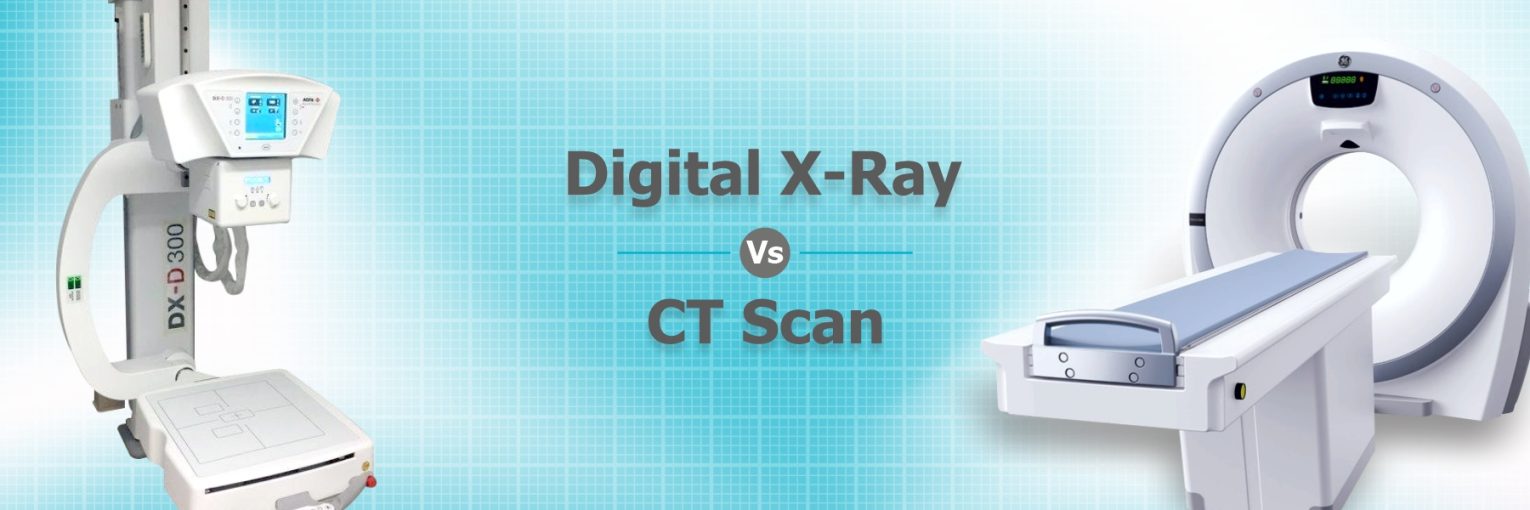Doctors normally use diagnostic imaging techniques to figure out the possible causes of any medical ailment. These techniques are used to investigate injuries, sudden cramps among other things. The healthcare sector has advanced enough to develop a variety of imaging methods like x-rays, CT scans and MRIs. But, what’s the difference between the three? More particularly between CT scans and MRIs? Well, here’s your chance to know.
X-Rays
X-rays are among the most common diagnostic imaging technique that is accessible in every other hospital or healthcare clinic. It is one of the first tests that a doctor prescribes in case of an accident or injury to check the full extent of the damage done to the body. Later the surgeon might recommend some advanced scans as well for an in-depth diagnosis.
X-rays use radioactive rays to develop images of the body and project them on screen. The rays, when passed through any dense objects like bones, would display a white image on the screen. This gives the doctor a clear picture of what’s wrong with the bones. X-rays are used to detect bone disease, degeneration, fractures, dislocations, infections and tumours.

X-rays are usually used to identify bone-related ailments, but doctors can even use the method to examine internal injuries and tumours. For this, the patient is first prescribed a dose of barium sulphate or dye to make the organs look clearer in x-ray. For the X-ray, the patient first has to change in the hospital gown and then the body part which has to be diagnosed is placed between the photographic film and x-ray machine. The machine then sends electromagnetic waves (radiation) through the body. The rays reflect on the patient’s internal organs and display them on the exposed black screen.
Note, that x-rays are generally not harmful to the body, however if you feel any allergies or reactions, do inform your doctor asap. Doctors refrain from doing an X-ray for patients who are pregnant or may take some extra precaution so as to keep the radiation exposure to a bare minimum.
CT Scans
CT scans aka computed tomography scan is similar to an MRI. Both these techniques are used to generate thorough, high-quality images of the body. The CT scan is a better, more effective version of an x-ray as it takes a 360-degree image of internal organs, the spine and vertebrae. Before the scan, the patient is injected with contrast dyes to make the image clearer and more prominent.
A CT scan helps doctors get a more detailed image of the organs, bones, soft tissue and blood vessels. These images are then used to detect medical ailments like communicable diseases, trauma, musculoskeletal disorders, appendicitis, heart disease, and cancer.

The equipment used for CT scan is also a bit more complex than an X-ray machine. The scanner looks like a huge box with a tunnel-shaped protruding in the center. The patient has to lie on the table which is designed to slide into the scanner. The tunnel shaped hole has the actual equipment attached which would scan your body and take the images to be displayed on screen.

The scanner rotates around the patient, generating a comprehensive cross-section of images from all angles. The process is done under the supervision of a doctor while the technician is usually in the next room, trying to arrange or optimise the images produced on screen in a set format. The doctor can communicate with the patient using microphones and speakers
X-rays are simpler and faster, CT scans, on the other hand, are far more advanced and require a far more advanced machinery. Plus, CT scans are expensive and not as easily accessible, you need a proper prescription by a doctor. CT scan machines are also not available in small-scale healthcare clinics or rural hospitals.
The Bottom Line
Technology has had a huge impact on the medical industry. With new and innovative improvements, healthcare is becoming more accessible and effective in curing deadly diseases. Both x-rays and CT scans have their own pros and cons. But there is no denying the fact that these techniques have made life a lot easier for doctors and patients alike. It facilitates faster diagnosis and treatment of maladies that were previously impossible.




